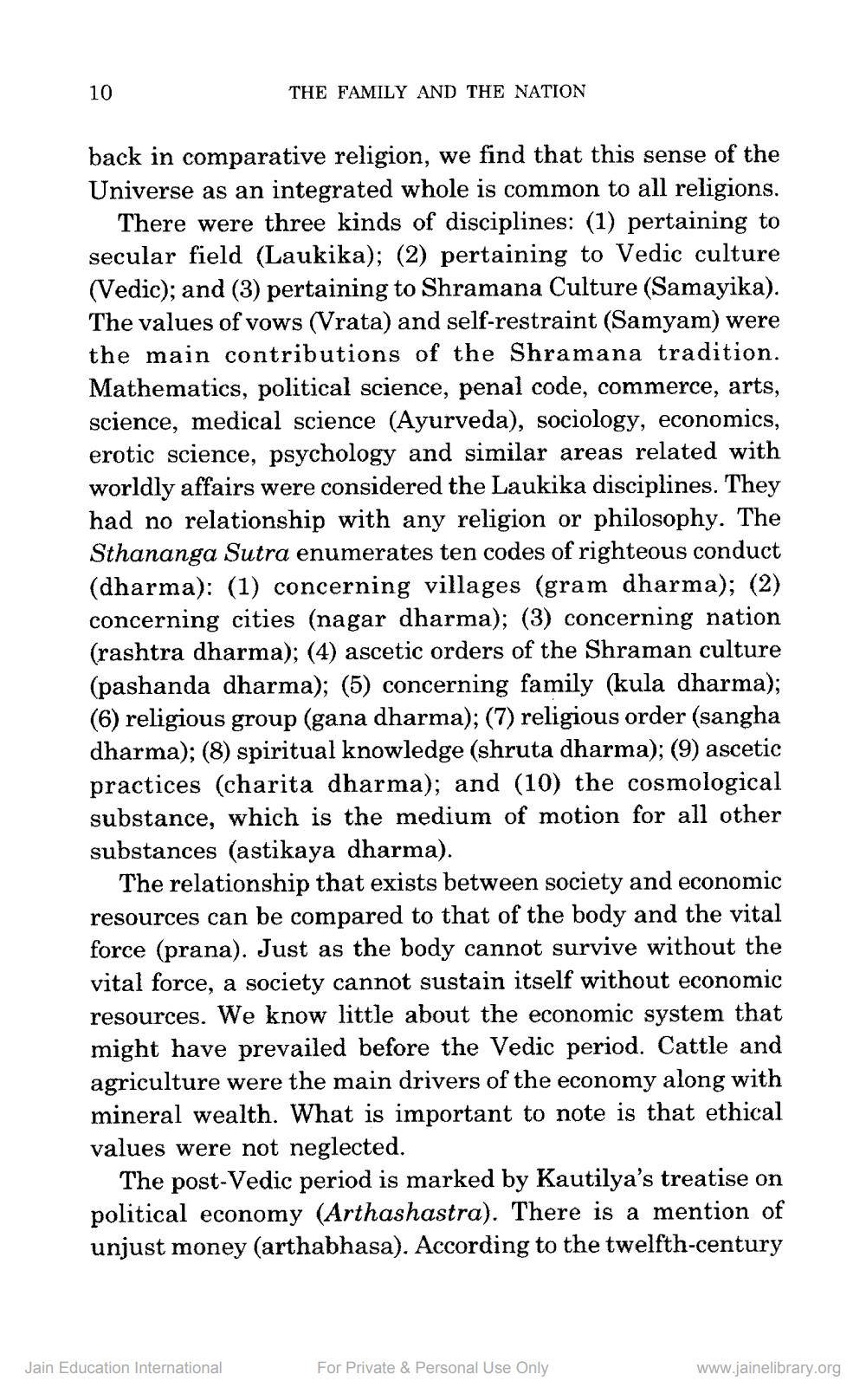________________
10
THE FAMILY AND THE NATION
back in comparative religion, we find that this sense of the Universe as an integrated whole is common to all religions.
There were three kinds of disciplines: (1) pertaining to secular field (Laukika); (2) pertaining to Vedic culture (Vedic); and (3) pertaining to Shramana Culture (Samayika). The values of vows (Vrata) and self-restraint (Samyam) were the main contributions of the Shramana tradition. Mathematics, political science, penal code, commerce, arts, science, medical science (Ayurveda), sociology, economics, erotic science, psychology and similar areas related with worldly affairs were considered the Laukika disciplines. They had no relationship with any religion or philosophy. The Sthananga Sutra enumerates ten codes of righteous conduct (dharma): (1) concerning villages (gram dharma); (2) concerning cities (nagar dharma); (3) concerning nation (rashtra dharma); (4) ascetic orders of the Shraman culture (pashanda dharma); (5) concerning family (kula dharma); (6) religious group (gana dharma); (7) religious order (sangha dharma); (8) spiritual knowledge (shruta dharma); (9) ascetic practices (charita dharma); and (10) the cosmological substance, which is the medium of motion for all other substances (astikaya dharma).
The relationship that exists between society and economic resources can be compared to that of the body and the vital force (prana). Just as the body cannot survive without the vital force, a society cannot sustain itself without economic resources. We know little about the economic system that might have prevailed before the Vedic period. Cattle and agriculture were the main drivers of the economy along with mineral wealth. What is important to note is that ethical values were not neglected.
The post-Vedic period is marked by Kautilya's treatise on political economy (Arthashastra). There is a mention of unjust money (arthabhasa). According to the twelfth-century
Jain Education International
For Private & Personal Use Only
www.jainelibrary.org




